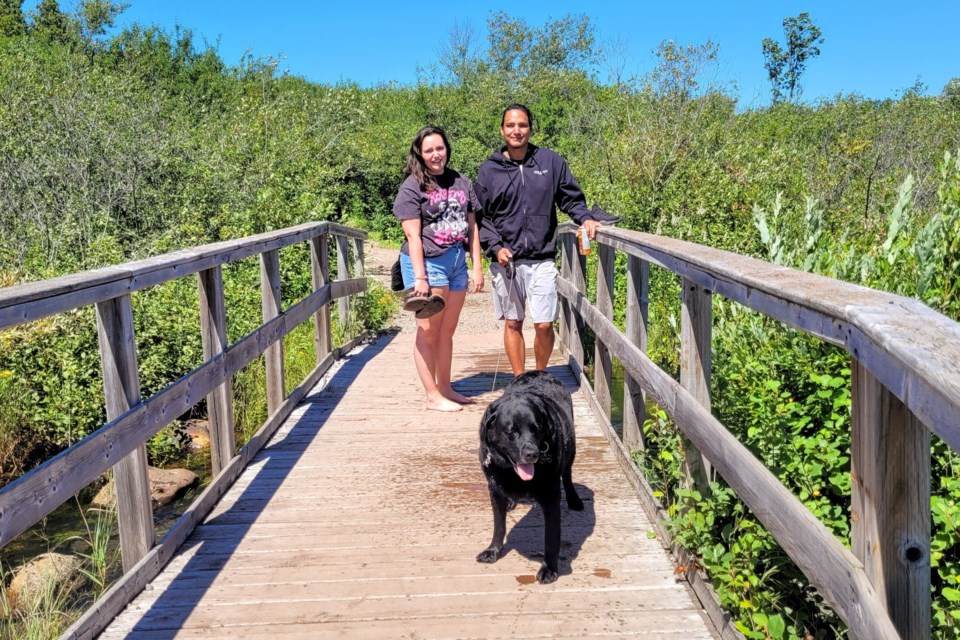While walking on Whitefish Island recently, we happened upon Winston Standingready, Bryanne Pearson and Ollie, a friendly six-year-old lab mix.
Standingready moved to the Sault from Saskatchewan a few years ago to live with Pearson; he says they love to visit the island almost daily to explore it, exercise Ollie and just be in nature.
"I feel very at home here," he said.
He told us he built an Inukshuk on a boulder in the rapids a little while ago, and someone knocked it over so he rebuilt it. The day we met him, he said he discovered, to his delight, that someone had built another, smaller Inukshuk beside his.
Whitefish Island is located to the south of the Sault Ste. Marie Canal National Historic Site, where visitors can park their cars. It's a short walk from one of the public parking lots to the lock gates over which visitors must pass to reach the island.
One end of Whitefish Island is nestled beneath the International Bridge, while the other provides an outstanding view of Sault Ste. Marie's downtown waterfront.
It is a reserve and a territory of the Batchewana First Nation. Whitefish Island is both historically and culturally significant to the community and its residents. Still, they have generously opened the 22-acre tear-shaped island to the public, sharing its rich history, vibrant wildlife, beautifully groomed trails and glorious views with the public.
Visitors to the island can access it year-round, with trails suitable for cycling or walking in the summer or snowshoeing in the winter. Many of the trails are so well-used that visitors pack them so they can be walked without snowshoes, even in the deepest snows.
The island had been continuously occupied by Anishnabe until 1905 when they were removed from the island to facilitate land appropriations for the railway.
After a long battle to force the Crown to honour both the 1850 and 1859 Robinson Huron and Pennefeather Treaties, the land was finally returned to Batchewana First Nation.
In the past, it has served the Anishnabe as a gathering place, a fishing ground, and a rest stop during travel. Again, it serves the people as a gathering place, a sacred land for ceremonies, gatherings, teachings and celebrations, many of which can be enjoyed by visitors to the island.
Visit Batchewana First Nation's website to learn more.
